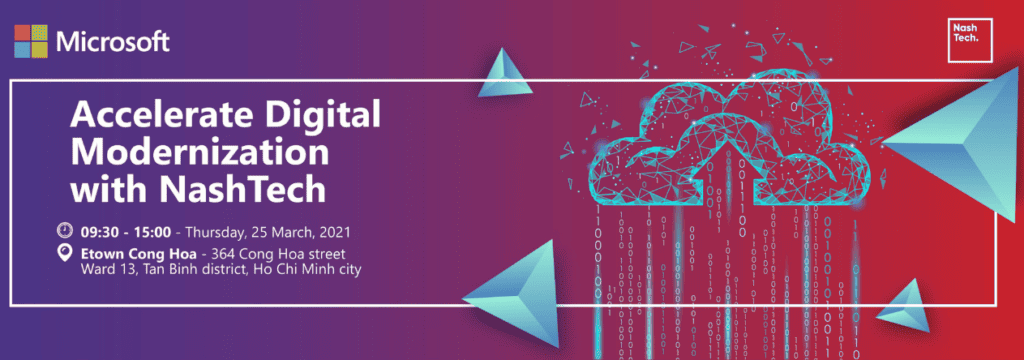Home / Our thinking / Insights / Application modernisation: From legacy burden to competitive advantage
Application modernisation: From legacy burden to competitive advantage

Table of contents
The global pandemic illuminated the importance of digital transformation. Companies with modern, cloud-based systems adapted quickly to new business models, requirements and priorities while many with legacy systems struggled. A recent study shows that 91% of organisations now advocate a digital-first business strategy.
Application modernisation is core to digital transformation. Updating and optimising applications removes the technical constraints that prevent business agility, integration with other systems and adoption of new technologies.
For companies starting a transformation, overcoming a mountain of technical debt is daunting. Growing awareness of challenges like cost, timescales, risk and technical inexperience can paralyse progress, stalling the journey before it's even begun.
The legacy problem
Age-old applications grow into unwieldy monoliths, bloated with updates, patches, bolted-on functions and once-ingenious workarounds. All with little or no documentation. Often, no one fully understands how the apps work - alone or together - to support business-critical processes. Without APIs, integration is difficult and time consuming - and it's painful to retrofit security that wasn't designed in.
Even when there's agreement to transform, it's challenging to step into the fast-moving world of digital technologies - no one wants to make the wrong decision. That's not surprising - 74% of organisations fail to complete legacy system modernisation projects.
The risks of not transforming are high
-
Losing market share or failing completely: digital-native companies and startups are agile, quick to adapt to new requirements, market trends and technologies. Businesses that embrace digital transformation follow their lead. Companies weighed down with legacy baggage trail behind, severely disadvantaged in this digital era.
-
Bad user experience: users want and recognise excellent user experience and are quick to abandon apps that are slow, unfriendly or lacking key features. If forced to use them - such as with internal company systems - they become frustrated. Companies that appear uncaring suffer damage to their brands and lose customers to their more agile competitors.
- Difficult to recruit talent: good developers are in short supply and most want to join a modern, exciting work environment. The pool of people skilled in legacy languages and tools is decreasing.
- High maintenance costs: making changes to legacy code is difficult and time-consuming. Outdated hardware is much harder to manage and more costly than using cloud services. Licences need to be renewed. Vendors may stop their support.
- Security and regulatory compliance: ever-increasing requirements are challenging to add to legacy systems.
- Big data limitations: data is a company's best asset - the key to differentiation and growth. Modern architectures enable new ways to use data from all parts of a business. Legacy systems tend to create data silos, preventing the use of techniques like data analytics, AI and machine learning (ML) to gain competitive advantage.
Application modernisation - the options
There's no one size fits all in application modernisation. A spectrum of options ranges from lift-and-shift (moving unchanged applications to the cloud) to rebuilding from scratch or replacing with SaaS or off-the-shelf products. In the middle, refactoring offers a way to prioritise and implement changes over time.
Lift-and-shift can seem attractive: no code changes required, reduced costs from running in the cloud. But the downsides are significant:
- With no underlying changes, companies won't see improved process performance.
- Without using technologies like analytics and ML, there's little opportunity to innovate or implement continuous improvement programmes.
- Eventually, a more extensive modernisation programme will be needed, negating ROI generated from rehosting.
Replacing or rebuilding represent high costs and risks. Replacement may be a viable option - although customisation increases costs and timescales. Rebuilding offers a good opportunity to create optimum functionality and performance but could take years to complete. Both options require existing applications to be maintained until the new system is deployed.
Refactoring is less risky and more agile. With a good understanding of the requirements, a transformation strategy and roadmap can be devised, focusing on priority areas. Approaches such as robotic process automation (RPA) or adding an API layer can enable quick wins and minimise disruption to other apps. Advantages include distributing costs over the programme lifetime, achieving ROI faster, and pivoting if better solutions emerge. However, a full refactoring transformation takes time.
Application modernisation - preparing for success
Determining the right way forward requires a thorough understanding of the application estate, showing how applications operate, integrate and support business critical processes.
The challenges of application modernisation shouldn't be underestimated. Key to success is working with an expert partner who has real-life experience of strategies and options that work, gained by helping other companies through their own digital transformation journeys.
Learn more about the NashTech approach or arrange a call to discuss how we can help, email info@nashtechglobal.com.

Suggested articles

Benefits of moving student information systems to the cloud for higher education institutions
Higher education institutions have long been burdened by a patchwork of systems designed to manage various aspects of the student lifecycle. From...

Applications need to be secure and resilient to accommodate change
Many businesses recognise the need to modernise their existing applications, making them more fit for today's dynamic market environment....

Accelerate Digital Modernisation with NashTech & Microsoft
Application modernisation has become of increasing interest to businesses, and there is growing recognition of its transformational benefits. On...